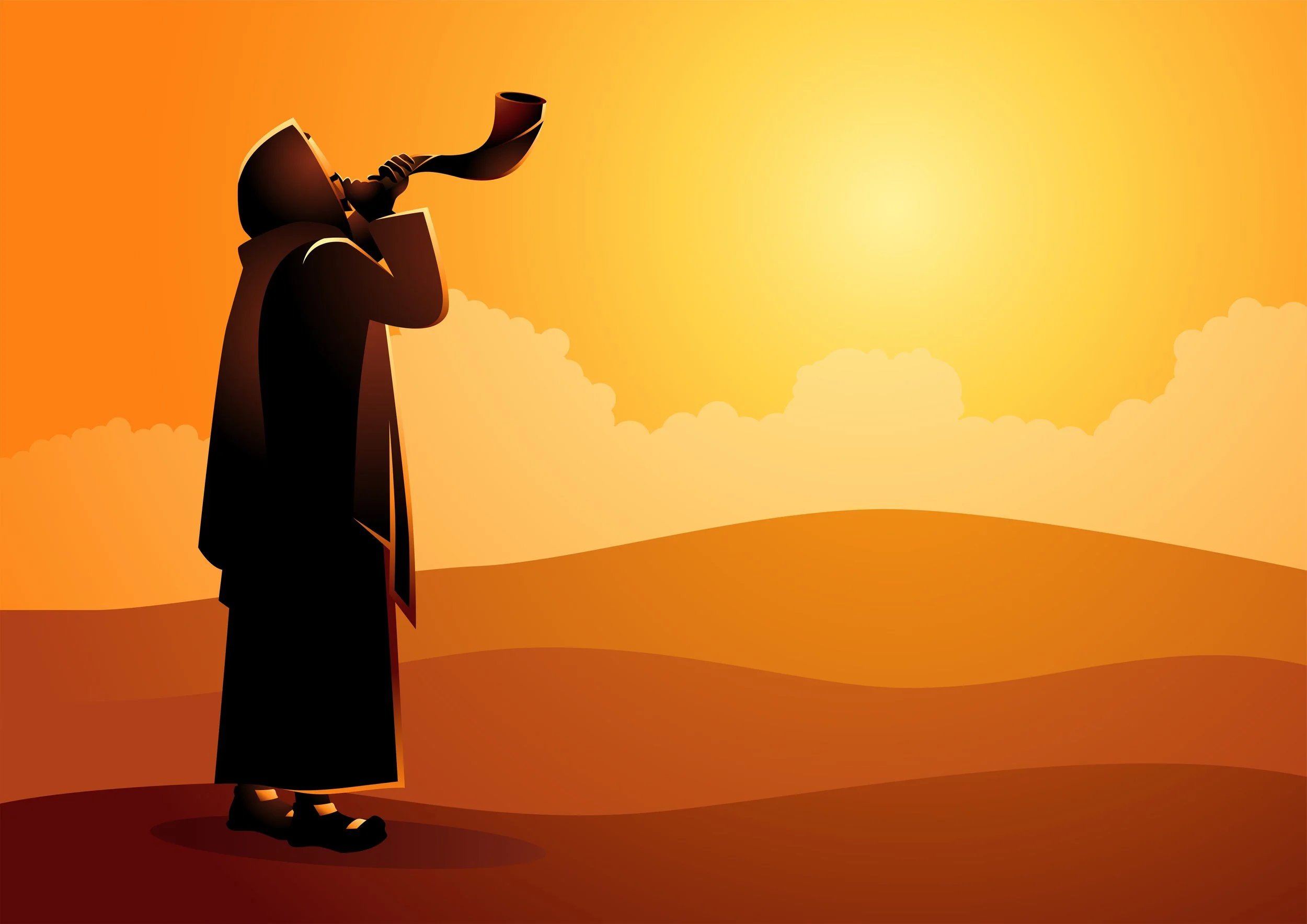Ram’s Horn
What is the significance of the ram’s horn? We think that this page from “That the World May Know” explains it perfectly. You can follow the link above or read what they have to say below:
“The Ram's Horn
Used to intimidate the enemy, to declare war, and to call people to assembly, the shofar is one of the oldest wind instruments in the world.' The army of Israel marched around Jericho to the signal of the shofar (Josh. 6). Jewish tradition links the ram's horn to the ram caught in the thicket and then sacrificed by Abraham in place of his son, Isaac (Gen. 22).
Symbolism
During biblical times, the shape and type of animal horn used to make a shofar were important. Horns could be taken only from a kosher animal like a sheep or mountain goat. Traditionally, the use of a cow horn was forbidden because of its association with the golden calf. The rounded curves of the shofar symbolized the act of being bent or submissive to God.
Sound
Although no one actually knows, some believe that the three notes played today are the same as those that were played in Jesus' time:
Tekiah - A long unbroken tone, symbolizes hope and the strength of God.
Shevarim - Three shorter, more broken sounds, indicates wailing and sorrow for sin.
Teruah - Nine staccato notes played very quickly, represents the broken heart of those who come to God.
The physical act of blowing the shofar at a Rosh Hashanah service was so strenuous that a second trained person was available if the first was unable to complete the task. The awesome sound of the shofar reminded the Jewish people of their past, God's great power, and his coming judgment.
Uses
In biblical times, the shofar announced the beginning of each new moon or month. The seventh month was announced with longer blasts for the special holy days of Rosh Hashanah, Yom Kippur, and Succoth.' On Rosh Hashanah, the shofar was blown a minimum of one hundred times, including a series of thirty blasts indicating the hope of the Messiah's coming.
In local Galilean villages, the hazzan (synagogue leader) announced the beginning of weekly prayers by blowing the shofar. Sabbath ended with another blast on the ram's horn. At the Temple, priests were trained to blow the shofar from a place called the "Pinnacle Corner," or the pinnacle tower. When nearby people heard the sound, they were reminded to confess their sins and to look to God for forgiveness.
Feasts
Though used in conjunction with all the feasts, the shofar was most directly linked with the beginning of the Feast of Rosh Hashanah (Lev. 23:24). The shofar also called the Jewish community together for a time of remembrance, confession of sin, and preparation for the judgment to come on Yom Kippur (Day of Atonement), when the high priest went into the Most Holy Place and sought forgiveness for the nation's sins.
On Passover as well, the priest climbed the Pinnacle Corner of the Temple, and blew the shofar. Everybody in hearing distance, certainly in the Temple, heard the shofar and knew that at that moment the lamb was slain for the world. For many years-maybe since the time of Moses-this practice had occurred at exactly three o'clock.
Jesus
Jesus described a coming judgment that will be announced by the blowing of the shofar (Matt. 24:31). Throughout his life, whether in Jerusalem at the Temple or in the synagogues of Galilee, Jesus heeded the shofar's call.During the crucifixion, Jesus hung on the cross, and time moved on. Amazingly, the Bible says at the ninth hour- 3:00 P.M.-at the moment when the Passover lamb was killed for the whole nation, Jesus looked up to heaven and said, "It is finished. Into your hands I commit my spirit (Luke 23:46)." You can almost picture the whole city busy in its work.
But suddenly the shofar blows, and those who believe in God stop a moment. In the quiet, the Lamb of God dies at the instant of the Temple sacrifice. What a profound way of describing for us what Jesus Christ came to do: He died as our Passover Lamb.

